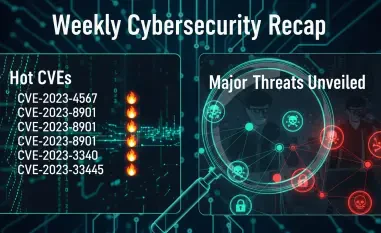In the ever-evolving landscape of cybersecurity threats, a particularly insidious campaign has emerged, targeting financial data across Latin America with alarming precision and sophistication. The Astaroth banking trojan, a malware notorious for stealing sensitive credentials, has adopted a groundbreaking method to maintain its operations even under intense scrutiny from law enforcement and security experts. By leveraging a widely trusted platform like GitHub to host critical configuration files, this threat demonstrates a chilling level of resilience that challenges traditional defense mechanisms. Primarily affecting countries such as Brazil, Mexico, Uruguay, Argentina, and Panama, the campaign underscores a growing trend among cybercriminals to exploit legitimate services for malicious intent. This development not only complicates detection but also signals a pressing need for innovative strategies to combat such adaptive threats in the digital realm.
Unveiling the Mechanics of a Sophisticated Threat
Dissecting the Infection Pathway
The attack chain employed by this banking trojan reveals a meticulously crafted strategy designed to ensnare unsuspecting victims with deceptive precision. It often begins with a phishing email disguised as a legitimate DocuSign communication, enticing users to click on a malicious link that downloads a zipped Windows shortcut file. Once activated, this file sets off a complex, multi-stage infection process involving obfuscated JavaScript and external server interactions. The culmination of this process sees an AutoIt script injecting the malware into a process named RegSvc.exe. Written in Delphi, the trojan then monitors browser activity, zeroing in on specific banking and cryptocurrency platforms to harvest login details through keylogging. These stolen credentials are funneled to attackers via a reverse proxy, showcasing a level of technical sophistication that makes this threat particularly dangerous for users in targeted regions.
A deeper look into the operational tactics reveals how this malware narrows its focus to maximize impact on specific demographics. By targeting well-known financial and crypto websites, it ensures that the captured data holds significant value for the perpetrators. The use of phishing as an entry point exploits human error, a common vulnerability in cybersecurity defenses. Beyond the initial breach, the intricate layering of scripts and processes serves to obscure the malware’s presence, making it challenging for standard antivirus solutions to detect or disrupt the infection before damage is done. This methodical approach to infiltration highlights the importance of educating users about phishing risks and the need for robust endpoint security to intercept such threats at the earliest stage possible.
Resilience Through Innovative Hosting
One of the standout features of this campaign is its ability to persist despite efforts to dismantle its infrastructure. By utilizing GitHub repositories as a fallback for storing configuration data, often hidden within images through steganography, the trojan can adapt swiftly when primary command-and-control servers are taken offline. This clever misuse of a legitimate platform not only ensures operational continuity but also complicates efforts by security teams to fully neutralize the threat. Such tactics reflect a broader shift among cybercriminals toward leveraging trusted services, blurring the lines between legitimate and malicious activity in a way that traditional security tools struggle to address effectively.
Further examination of these resilience mechanisms shows additional layers of defense built into the malware’s design. Features like anti-analysis capabilities allow it to shut down if debugging or emulation tools are detected, while geofencing restricts execution on systems with certain locales, focusing its impact on specific geographic areas. Persistence is also ensured through strategic placement of shortcuts in the Windows Startup folder, guaranteeing reactivation after system reboots. This combination of innovative hosting and protective measures underscores a calculated effort to evade disruption, pushing cybersecurity professionals to rethink how they approach mitigation in an era where legitimate platforms are weaponized with alarming frequency.
Broader Implications for Cybersecurity Defenses
Evolving Threat Landscapes
The emergence of such sophisticated malware campaigns signals a troubling evolution in the tactics employed by cybercriminals across the globe. The strategic use of platforms like GitHub for hosting malicious configurations points to a growing trend of exploiting trusted digital environments, making it increasingly difficult for security solutions to distinguish between safe and harmful content. This approach not only enhances the malware’s ability to withstand takedown attempts but also places additional pressure on organizations to monitor and respond to threats that hide in plain sight. As seen in related campaigns targeting Latin America, the regional focus of these attacks suggests a deliberate effort to exploit vulnerabilities in specific markets, necessitating tailored defensive strategies.
Beyond the immediate technical challenges, this trend highlights a critical shift in the cybersecurity landscape that demands a reevaluation of current protective measures. The reliance on legitimate platforms for illicit purposes complicates traditional takedown efforts, as seen in collaborative actions to remove malicious repositories, which often provide only temporary relief. Reports of similar threats targeting the same regions over recent years reinforce the persistent nature of these campaigns, indicating that threat actors continuously refine their methods in response to heightened security efforts. Addressing this evolving landscape requires not just technological innovation but also international cooperation to disrupt the ecosystems that enable such attacks to flourish unchecked.
Strengthening Defenses Against Adaptive Malware
Looking back, the campaign driven by this banking trojan underscored the urgent need for adaptive cybersecurity measures that went beyond conventional approaches. Collaborative efforts between industry leaders and platform providers had temporarily disrupted malicious operations by removing harmful repositories, yet the inherent resilience of these tactics suggested that such actions were merely stopgap solutions. The intricate design of the malware, from phishing entry points to innovative hosting strategies, demanded a proactive stance in developing defenses capable of anticipating and countering such adaptability.
Reflecting on those challenges, it became evident that future considerations had to prioritize enhanced user education to combat phishing attempts at the source. Simultaneously, security teams were encouraged to invest in advanced detection tools that could identify and neutralize threats hidden within legitimate platforms. International partnerships also played a crucial role, as sharing intelligence across borders helped to map and disrupt the networks behind these campaigns. Ultimately, the battle against such persistent threats necessitated a commitment to innovation, ensuring that defenses evolved alongside the sophisticated tactics of cybercriminals to safeguard vulnerable systems and users.













